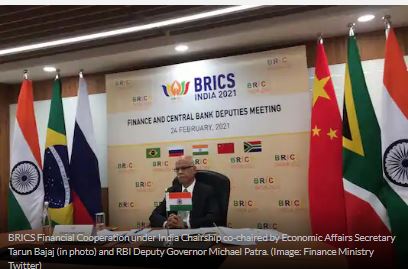According to the IEA’s India Energy Outlook, 2021, released on Tuesday, India’s energy consumption is expected to nearly double as the nation’s gross domestic product (GDP) increases to an estimated $8.6 trillion by 2040.
Mumbai: Sanjhi Soch buero : India will make up the largest share of energy demand growth of 25% over the next two decades, as it overtakes the European Union (EU) as the world’s third-largest energy consumer by 2030, according to the International Energy Agency
According to the IEA’s India Energy Outlook, 2021, released on Tuesday, India’s energy consumption is expected to nearly double as the nation’s gross domestic product (GDP) increases to an estimated $8.6 trillion by 2040 under its current national policy scenario.
India’s ability to ensure affordable, clean, and reliable energy for its growing population will be vital to the future development of its economy, but avoiding the kind of carbon-intensive path that other countries have followed will require strong policies, technological leaps, and a surge in clean energy investment, said IEA.
India is set to experience the largest increase in energy demand of any country worldwide over the next 20 years as its economy continues to develop and bring greater prosperity to its citizens. Combining a growing and industrializing economy and an expanding and increasingly urban population will drive energy use higher, raising the question of how best to meet that swelling demand without exacerbating issues like costly energy imports, air pollution, and greenhouse gas emissions.”India has made remarkable progress in recent years, bringing electricity connections to hundreds of millions of people and impressively scaling up the use of renewable energy, particularly solar,” said Dr Fatih Birol, the IEA Executive Director. “What our new report makes clear is the tremendous opportunity for India to successfully meet the aspirations of its citizens without following the high-carbon pathway that other economies have pursued in the past. The energy policy successes of the Indian government to date make me very optimistic about its ability to meet the challenges ahead in terms of energy security and sustainability.”
The rapid expansion of solar power combined with smart policy-making are transforming India’s electricity sector, enabling it to provide clean, affordable, and reliable power to a growing number of households and businesses, the report finds. However, as is the case in economies worldwide, the transport and industrial sectors – areas like road freight, steel, and cement – will prove far more challenging to develop sustainably.
More than that of any other major economy, India’s energy future depends on buildings and factories that are yet to be built and vehicles and appliances that are yet to be bought. Based on India’s current policy settings, nearly 60% of its CO2 emissions in the late 2030s will be coming from infrastructure and machines that do not exist today. This represents a huge opening for policies to steer India onto a more secure and sustainable course.If India goes down this path, it needs to address the industrial sector’s critical challenge through efforts like more widespread electrification of processes, greater material, energy efficiency, the use of technologies like carbon capture, and a switch to progressively lower-carbon fuels. Electrification, efficiency, and fuel switching are also the main tools for the transport sector, alongside a determined move to build more sustainable infrastructure and shift more freight onto India’s soon-to-be-electrified railways, said IEA.












